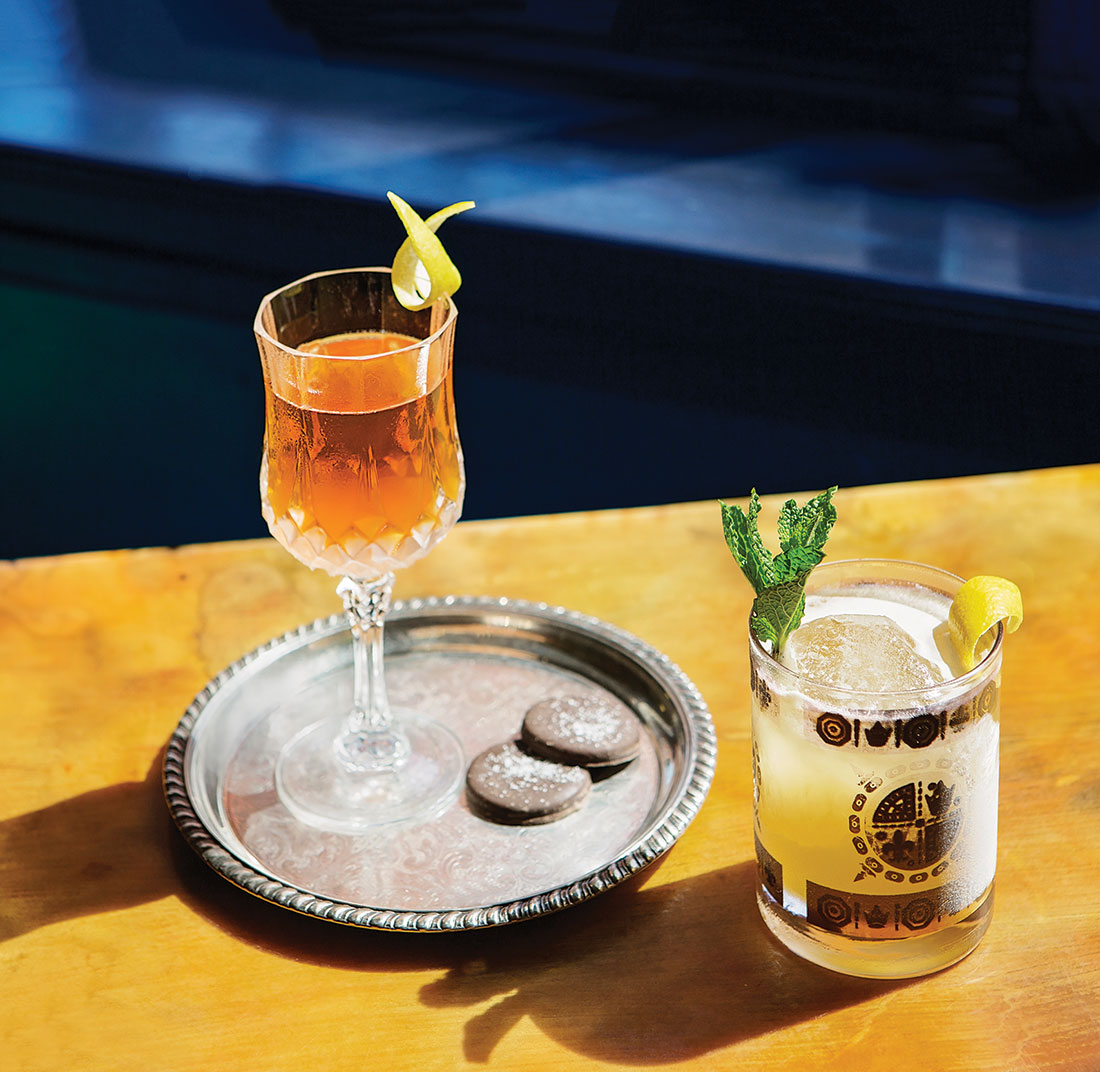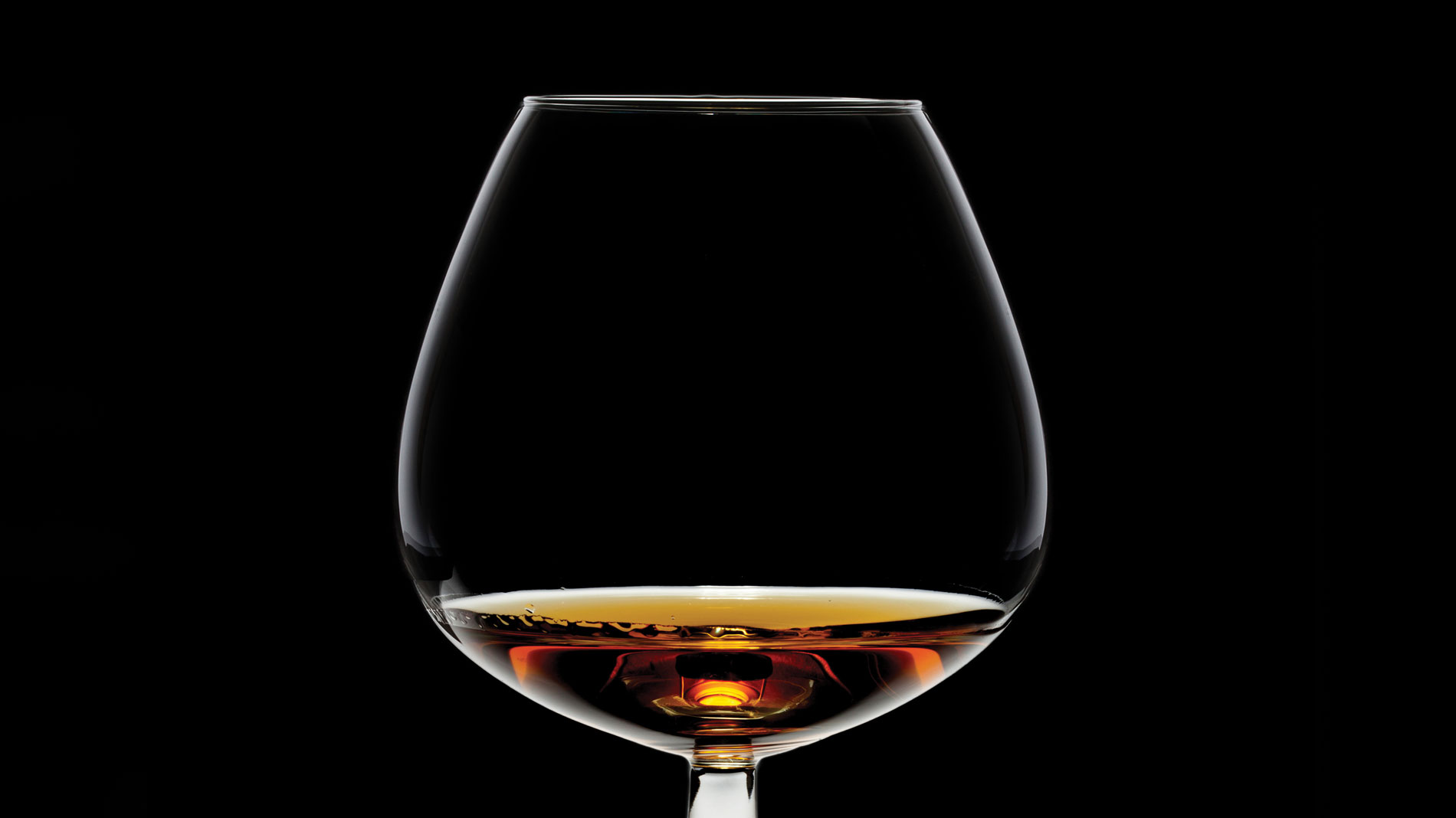First Class Glass: Brandy beguiles a new generation
These days, people are more likely to get excited about the ’90s R&B Brandy than the oft-overlooked spirit. Perhaps it’s the confusing nomenclature: What’s the difference between Cognac, Armagnac and schnapps? Maybe it’s brandy’s stuffy, cigar-jacketed image – it just isn’t considered as sexy as whiskey (or as catchy as “The Boy Is Mine”).
“People in France tend to think of it as an old man’s drink,” said Planter’s House co-owner Ted Kilgore.
But brandy – broadly defined as a spirit distilled from fermented fruit juice – is making a comeback among some distillers and barkeeps keen on pouring classic cocktails that take advantage of its unique qualities of fruit, terroir and aging. It’s really the original American booze – the first distilled in the U.S. Most are made with grapes by distilling wine and aging the distillate in wood barrels, but the first American version was probably an apple brandy made in the mid-1600s, well before rye whiskey and bourbon. Some of the oldest classic cocktails, like the sidecar, are built on brandy, and others, like the typically rye-based Sazerac, were originally made with brandy.
From the time of the tricorn hat onward, however, the fanciest Americans were (and still are) drinking Cognac. To be called Cognac, brandy must be made in the namesake region of France and distilled twice in a pot still. And since we’re talking about France here, Cognac was one of the first quality-controlled brandies – which partially accounts for its long-standing baller status. The most lauded brandies still come from Cognac.
Similarly, Armagnac the spirit is produced in the more southern Armagnac region of France, though this one is made in a column still. Due to variations in grape blends and terroir, Armagnac has a younger, rowdier character than its sophisticated cousin from the north.
There are so many kinds of Cognac and Armagnac that describing them is kind of like trying to give tasting notes for “red wine,” but in general, Cognac is smooth and round with subtle earthy and fruity notes and softly fades to a smooth, dry finish. Armagnac has a butterscotch nose and is spicier and punchier up front than Cognac.
In true cowboy fashion, American distillers are working to give these OG French producers a run for their euro. In April, a group of makers and industry pros met for the first California Brandy Summit and left resolved to further the craft and raise the status of California brandy. We’ve all come a long way since our utilitarian pre-revolutionary days.
“It’s an interesting time to watch things change,” said Kilgore, noting an increase in the production of apple brandies from American producers.
Closer to home, award-winning brandy is being made just outside of Marthasville, Missouri. Edelbrand Pure Distilling specializes in fruit brandies (those made with something other than grapes). Owners Martin Weber, Lynn DeLean-Weber and Tess DeLean have only been distilling since 2014, but Edelbrand apple brandy infused with plum snagged a gold medal at this July’s Washington Cup in Kansas City, and will be put through to a second round of national competition. The distillery’s apricot and grape brandies each took silver medals. Edelbrand walked away with plenty of bling at the Mid-American Wine Competition as well: a gold medal and Best Spirit designation for its plum brandy, silver medals each for its apricot and grape brandies and a bronze for its apple brandy infused with plum.
“We’re still floating on a cloud,” said DeLean-Weber. “You can’t wipe the smile off his face.”
That face belongs to her husband, Martin. He was born and raised in the Swiss canton of Graubünden, where an after-dinner glass of schnapps was tradition. Schnapps can refer to many infused spirits or liqueurs, but is commonly a stand-in for fruit brandy. In Switzerland, they’re not the syrupy, tooth-gratingly sweet swill marketed to unsuspecting college students. Rather, Swiss schnapps are dry and complex, focused on the essence of the fruit.
“This is something that was part of his heritage,” DeLean-Weber said. “Martin wanted to try it. I told him, ‘If you can make it, I think I can sell it.’”
It takes about 15 to 18 pounds of pears to make one 375-milliliter bottle of Edlebrand’s pear brandy. The distillers started with a 7-gallon still, then acquired a 12-gallon still and in 2015 got an 18-gallon still. This year they have produced just fewer than 1,100 bottles.
“The big guys spill more in an hour and we make in a year,” said DeLean-Weber.
What Edelbrand does make can be found at local restaurants like Annie Gunn’s, YaYa’s, Acero and Stone Soup Cottage. To take a rare bottle home, keep an eye out at The Wine and Cheese Place and Vom Fass.
With both grape-based brandies and the clear, essential versions with pear, plums or apricots sneaking back into more cocktails and menus, you may soon ask yourself: Have you ever loved some bottle so much it makes you cry?

How old’s your Hennessy?
Cognacs and Armagnacs have standard designations and (not very clever) abbreviations. While these may sound pretentious AF, knowing the lingo should make your trip to the liquor store easier.
VS (Very Special) The youngest brandy blended into VS Cognacs is at least 2 years old, while VS Armagnacs all have to be at least 1 year old.
VSOP (Very Superior Old Pale) The youngest eau de vie in both Cognac and Armagnac VSOP brandies has to be at least 4 years old.
XO (Extra Old) Extra old means 6 years for Cognacs and Armagnacs.
Bottles to buy
Ready to be wooed by a bottle of brandy? Check out these pro picks ranging from wallet-friendly to impress-the-boss.
Cognac Claude Chatelier VS
With lots of fig, apricot and peach on the nose, this rich, full Cognac finishes with a dry, lingering spiciness. Its quality far exceeds the price tag. $20. Trader Joe’s, various locations, traderjoes.com
Camus VS
A bar rail standard, the Camus VS is primarily floral with notes of honeysuckle, honey and caramel. $25. The Wine and Cheese Place, 7435 Forsyth Blvd., Clayton, 314.727.8788, wineandcheeseplace.com
Pierre Ferrand 1840
Spicy and bold, this is a great Cognac for cocktails. $43. The Wine and Cheese Place
Camus Île de Ré Cliffside
Aged in a cellar overlooking the Atlantic Ocean, the Cliffside is mellow with orange and dried grape notes. $80. The Wine and Cheese Place
Leopold Raffin Cognac XO
The oldest of the bunch, this XO Cognac features delicate and smooth peach and almond notes. $130. The Wine and Cheese Place
Sidewinder
Courtesy of Frazer’s Terry Oliver
1 SERVING
1 oz. Big O Ginger Liqueur
1 oz. Camus VS
1 oz. Rothman & Winter apricot liqueur
¾ oz. lemon juice
Lemon twist and mint, for garnish
• Combine all ingredients in shaker and fill two-thirds with ice. Shake vigorously 20 seconds and strain into a rocks glass with 1 large ice cube. Garnish with the lemon twist and mint.
Fine and dandy
Courtesy of Frazer’s Terry Oliver
1 SERVING
1½ oz. Camus VS
1 oz. Plantation 5-year rum
1 oz. Velvet Falernum
1 barspoon absinthe
1 dash Angostura bitters
1 dash chocolate bitters
1 dash orange bitters
Lemon twist, Thin Mint cookie and sea salt, for garnish
• Combine all ingredients in a mixing glass and fill two-thirds with ice. Stir 30 seconds and strain into a chilled coupe glass. Garnish with the lemon twist and a Thin Mint cookie with sea salt.
Sazerac
Courtesy of Planter’s House’s Ted Kilgore
1 SERVING
¼ ounce absinthe
2 oz. Camus VS or Pierre Ferrand 1840
½ ounce simple syrup (equal parts water and sugar)
6 dashes Peychaud’s Bitters
Lemon twist
• Pour the absinthe into a highball glass and swish around, coating the sides and bottom of the glass. Discard remaining liquid.
• Combine the Cognac, simple syrup and bitters in a shaker and fill two-thirds with ice. Stir 30 seconds and strain into the absinthe-rinsed glass. Twist the lemon over the drink and discard the peel.
Tags : Cocktails, Recipes, Guide to Drinking, Bars






